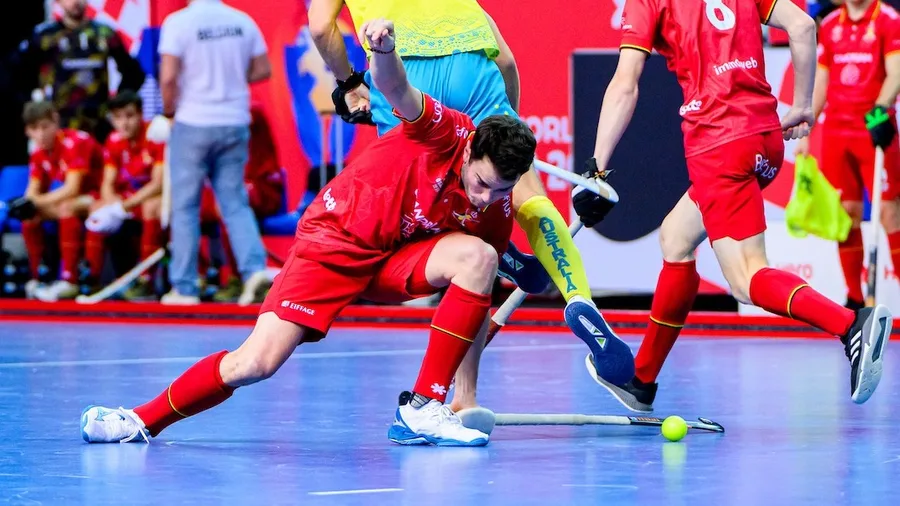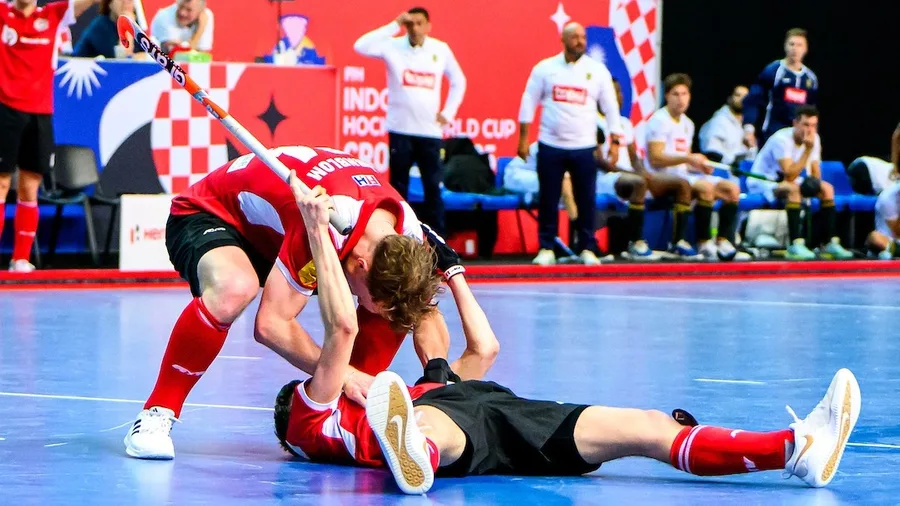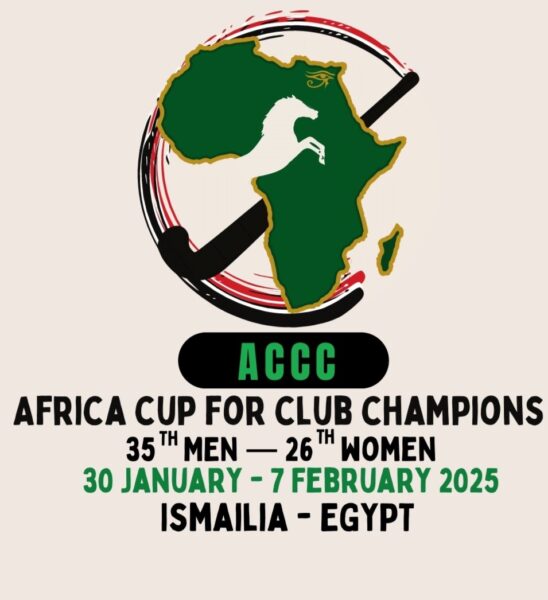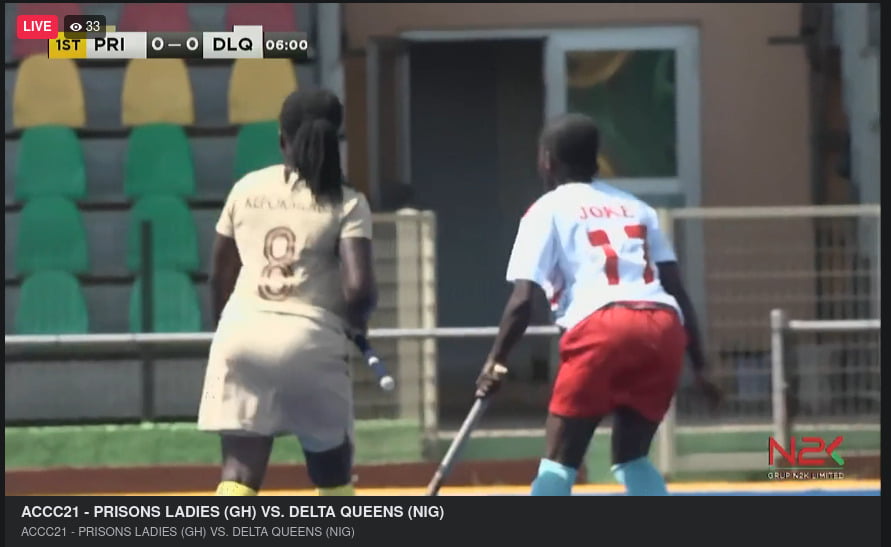05 Feb, 2025 Several teams secured their tickets to the quarterfinals on the third day of action at the FIH Indoor Hockey World Cup in Poreč, Croatia on Wednesday. Austria’s men, who secured their playoff spot a day earlier, will be joined by Belgium, Iran, and Germany, while in the women’s event Germany, Namibia and Belgium advanced to join Czechia in the final eight. The Belgian men made sure of their place with an emphatic 7-3 win over Australia. It was joint player of the match performances from skipper Phillippe Simar, who bagged all seven goals, and goalkeeper Romain Henet who produced three brilliant saves, that denied Australia any momentum in the match. Simar said afterwards: “That was a top performance with seven goals against the main team of the pool, so yeah, I pushed goals but Romain had a really good game, he saved three or four really, really good saves at good moments so that’s the most important thing today.” Belgium’s women followed their men into the quarterfinals after a 1-1 draw with the United States. A beaming Margaux Coudron was named player of the match and said: “The USA is really a tough team so we knew it wasn’t easy, but we managed the game. It was not the nicest game to watch because it was slow but we knew that a draw was enough so we kept calm.” Iran’s men, bronze medallists in 2023, progressed after prevailing 3-0 in their tricky clash with Malaysia. “All of the team and all of the players worked hard for this game. This game was very important for us and I give this honour to our players,” said player of the match Sajjad Mamizadeh afterwards. The German men advanced with an 8-2 win in a heated encounter against Argentina. The Argentinians desperately wanted a win to avoid the permutations involved in determining the two non-automatic places in the quarterfinals and found themselves trailing by just one goal towards the end of the third quarter. Things fell apart quickly though as they conceded two penalty strokes and a soft goal from a poor pass across the goalmouth. Player of the match Ben Hasbach did most of the damage with his five goals for Germany and said afterwards: “We started very bad, but we came in the second half very good into the game, we scored our goals, and we’re happy to be in the quarterfinals with three wins.” Meanwhile, there was another heavy defeat for Australia as Germany’s women cruised to a 7-0 win over the team ranked one place above them in the world. The victory saw the Germans booking their quarterfinal spot with skipper Fenja Poppa named the player of the match. “I’m really happy that we won the second game. We scored a lot of goals and I’m really proud of the team,” she said. The Namibian women also advance after trouncing New Zealand 7-0, so recording their first ever back-to-back wins at an FIH Indoor Hockey World Cup. Thrilled player of the match Kiana-Ché Cormack said afterwards: “It really feels amazing. I mean, we’ve ticked our first box, one of our goals was to come top two in our pool, and so now we can just go and play against Germany.” In other action, already-qualified Czechia’s women extended their unbeaten record, finishing the pool stage with a comfortable 4-1 win over hosts Croatia while Namibia’s men remain in contention for a quarterfinal place after a strong finish in their 6-3 win over Trinidad and Tobago. The United States women can only watch the permutations play out on Thursday to see whether they will advance. 5 February 2025 Results Men Result: Match 11 (M) Namibia 6 – 3 Trinidad & Tobago Player of the match: Pieter Jacobs (NAM) Umpires: Ben Goentgen (GER), Kristy Robertson (AUS) Result: Match 12 (M) Australia 3 – 7 Belgium Player of the match: Romain Henet & Philippe Simar (BEL) Umpires: Ana Ortega (ESP), Pieter Hembrecht (NED) Result: Match 13 (M) Iran 3 – 0 Malaysia Player of the match: Sajjad Mamizadeh (IRI) Umpires: Michelle Meister (GER), Michael Pontus (BEL) Result: Match 14 (M) Argentina 2 – 8 Germany Player of the match: Ben Hasbach (GER) Umpires: Zeke Newman (AUS), Lukasz Zwierzchowski (POL) Women Result: Match 11 (W) Namibia 7 – 0 New Zealand Player of the match: Kiana-Ché Cormack (NAM) Umpires: Sean Edwards (ENG), Emily Carroll (AUS) Result: Match 12 (W) Germany 7 – 0 Australia Player of the match: Fenja Poppe (GER) Umpires: Abby Macarthur (WAL), Salman (INA) Result: Match 13 (W) United States 1 – 1 Belgium Player of the match: Margaux Coudron (BEL) Umpires: Ivona Makar (CRO), Ayden Shrives (RSA) Result: Match 14 (W) Czechia 4 – 1 Croatia Player of the match: Natálie Nováková (CZE) Umpires: Melina Illanes (ARG), Rachel Williams (ENG) All images: ©FIH/WorldSportPics





